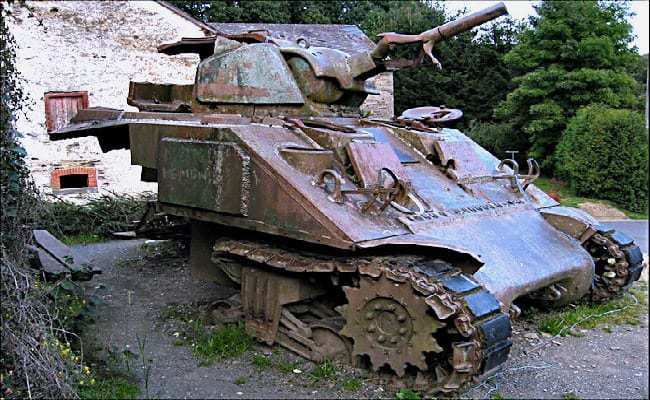The Second World War involved more than 100 million people from over 30 countries. All of the major participants entered in a state of “total war”. Science, economy, industry, agriculture, in fact, everything was geared towards the war effort. The vast distances covered by the armies meant vehicles were vitally important for all combatants. This industrial war would be won not only on the battles fought but also in the much less glamorous area of transportation and supply lines. Getting the troops to the frontline was a vital part of the war effort. We will look at 10 military vehicles that became the unsung heroes of the Second World War.

10. The Original Bantam BRC Jeep
“The Jeep, the Dakota, and the Landing Craft were the three tools that won the war.” — Gen. Dwight D. Eisenhower
In 1940, as it became increasingly likely that the U.S.A would be drawn into the Second World War, the U.S Army approached 135 U.S. automotive manufacturers to submit designs to replace it’s light motor vehicles. The Army’s specifications were demanding, a 4 wheel drive, fold down windshield, 660-pound payload and the vehicle should weigh no more than 1300 pounds.
American Bantam Car Company, Willys-Overland Motors, and the Ford Motor Company entered, Bantam won but did not have the production capacity to mass produce the vehicle, Willy’s took over but, once again, they couldn’t keep up with the production demand and Ford was contracted to produce the vehicle. The Ford car was designated GPW, with the “W” referring to the “Willys” licensed design.
A staple of all classic Second World War movies, the Bantam Jeep was a lightweight, 4×4 vehicle which could be used in reconnaissance missions. The vehicle served with distinction in every combat zone and every “rear area” of the war. The beauty of the design meant that modifications were endless, the vehicles were used for; garbage trucks, artillery platforms, litter carriers, messenger service, VIP limousines, and even heavily armed rapid strike assault vehicles.
The jeep was able to travel over all terrain and was even used as aircraft tugs onboard fleet carriers. 13,000 amphibian jeeps were built by Ford, they were inspired by the larger DUKW, but the amphibious jeep was too heavy and most of the GPA’s were routed to the U.S.S.R. under the Land-Lease program. The Soviets were happy with the vehicles impressive ability to cross rivers and they developed their own version of it after the war, the GAZ-46. Jeeps became so popular in the European theatre that German troops came to believe that each American soldier was issued his own jeep.

